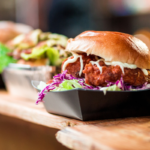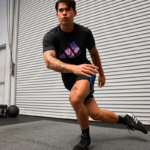
Iron deficiency is one of the most common nutrient deficiencies in the world. Over 20% of women struggle with it. (1) For athletes, a lack of this micronutrient can lead to a serious drop in performance.(2) The good news is that you can usually prevent or treat iron deficiency with a balanced diet. So, what is iron, how does a deficiency develop, and what foods provide the most iron?
We’re going to answer the following questions:
What is iron and what does it do in your body?
Iron is an essential trace element. The body cannot produce it, which is why we have to get it through food. Iron is an important building block for hemoglobin – a protein in red blood cells that enables them to carry oxygen. Iron is also necessary for the formation of new red blood cells. If your body doesn’t have enough iron available, it cannot produce enough red blood cells. And that’s not all: iron gives us energy, strengthens our immune system, and keeps the hair, skin, and nails healthy.
How much iron do I need?
Premenopausal women should consume 15 mg per day. The recommended daily iron intake for women after menopause and men is 10 mg. Pregnant women need 30 mg and breastfeeding women 20 mg per day. (3) Below you can read about which foods provide the most iron.
What are the signs of iron deficiency?
Iron deficiency is one of the most common causes of anemia. The condition that results from a lack of iron is called iron deficiency anemia. What happens? The cells don’t get the oxygen they need to work properly. A deficiency is caused by low or poor absorption of dietary iron.

Signs of an iron deficiency:
- exhaustion
- difficulty concentrating
- malaise
- headaches
- pale complexion
- brittle nails and hair
- increased hair loss
- cracks at the corners of the mouth
- decline in physical performance
- impaired thermoregulation (feeling cold)
- increased infections
Who is at risk of an iron deficiency?
Children and women have an increased risk of developing an iron deficiency. (4) This can be due to the loss of iron during menstruation as well as a higher iron requirement during pregnancy and breastfeeding. Older people, athletes, and those who eat a diet low in iron and vitamin C can also develop an iron deficiency. Vegans and vegetarians might struggle with a low level of iron intake. Another cause of absorption problems is gastrointestinal diseases. (5)
How can I treat an iron deficiency?
Do you feel tired a lot, low energy, or have other symptoms of an iron deficiency? Consult your doctor and get a blood test to see if there are clear indications of an insufficiency. If so, an iron infusion might be a wise option. It’s important that you regularly include foods high in iron in your diet in order to prevent levels from dropping too low.
Which foods have the most iron?
A balanced diet with plenty of variety is essential to prevent an iron deficiency. All food contains different amounts of iron, but the degree to which it can be absorbed by your body varies depending on factors such as the type of iron available.
About 40% of the iron in meat and fish is heme iron, while plant-based foods contain non-heme iron. The body absorbs 10 to 20% of the available iron in animal products and only 1 to 5% of the iron in fruit, vegetables, and nuts. Anyone following a vegan diet needs to make sure they include plenty of plant-based iron sources in their diet.

Foods high in iron:
- pork liver (15 mg/100 g)
- beef (2 mg/100 g)
- oats (5 mg/100 g)
- quinoa (8 mg/100 g)
- lentils (8 mg/100 g)
- pumpkin seeds (12 mg/100 g)
- sesame seeds (10 mg/100 g)
- chickpeas (6 mg/100 g)
- spinach (4 mg/100 g)
- chicken eggs (2 mg/100 g)
- dried dates (2 mg/100 g)
Which foods improve or block iron absorption?
You can improve your iron absorption by combining foods high in iron with those high in vitamin C.
The following combinations boost iron absorption:
- oatmeal with raspberries
- bell pepper sticks with hummus
- quinoa salad with oranges
- snack mix of pumpkin seeds, dates, and oranges

Beware of plant substances like polyphenols or phytates that block iron absorption. These can be found in coffee and black tea. Calcium – in milk, for example – can also inhibit absorption.(6)
Now you can see: getting enough iron from your food is not an impossible feat. Just make sure you eat a healthy, balanced diet and combine plant-based foods to boost absorption.
***


